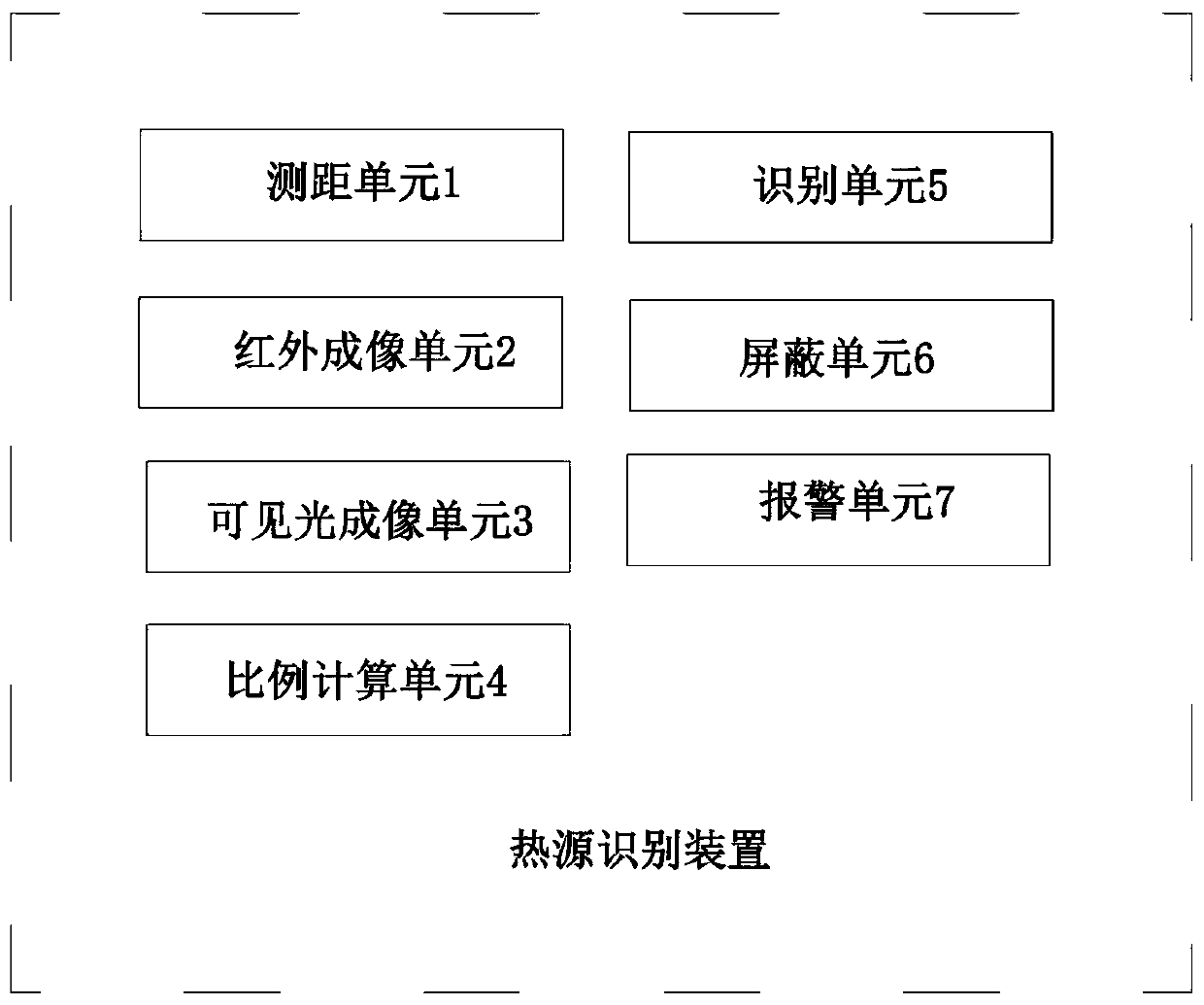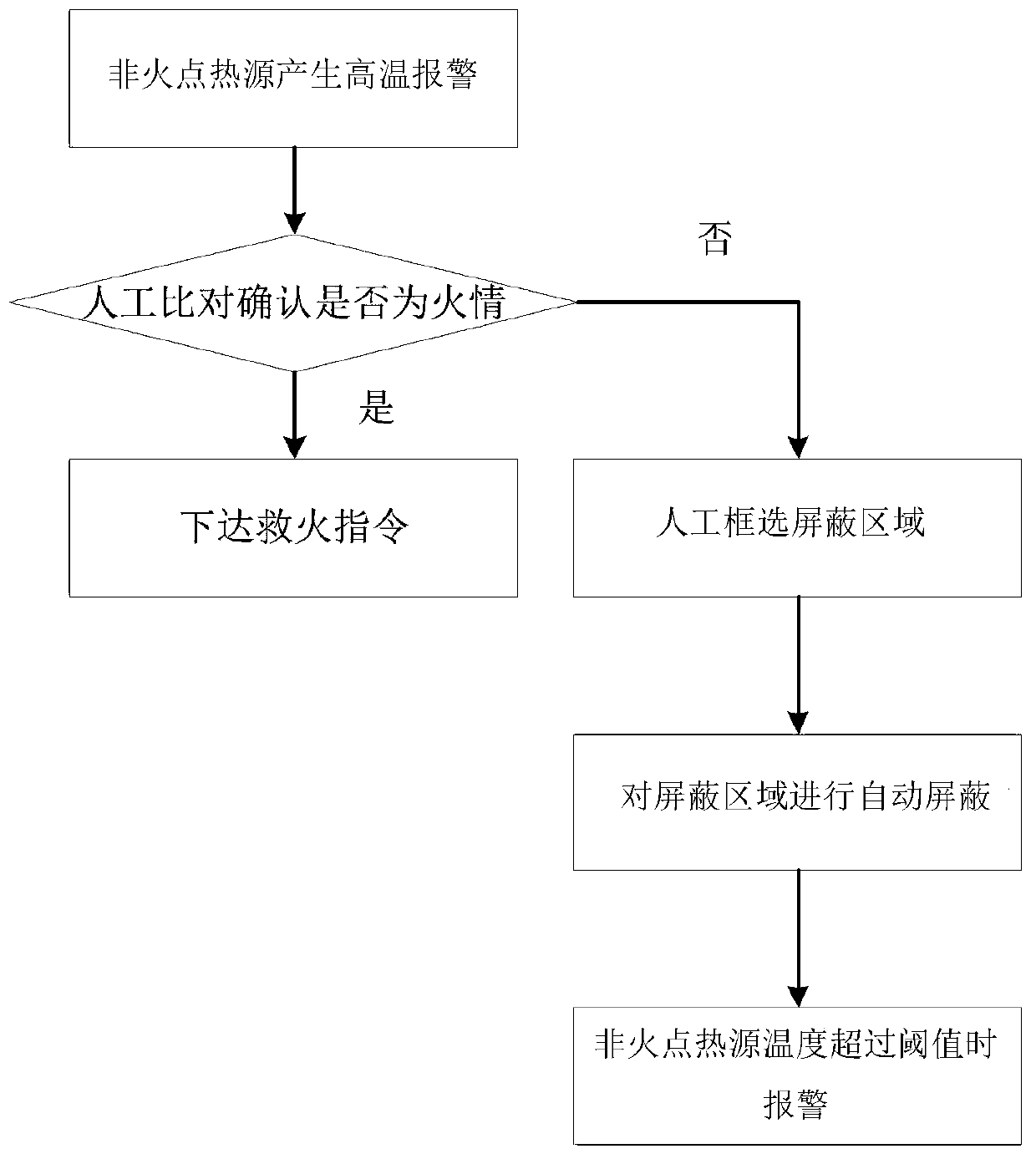Heat source recognition device, unmanned aerial vehicle and heat source recognition method
A recognition device and recognition method technology, applied in three-dimensional position/channel control, vehicle position/route/height control, non-electric variable control, etc., can solve problems such as high false alarm rate, fire false alarm, complex urban environment, etc. Achieve the effect of reducing the high false alarm rate and ensuring accuracy
- Summary
- Abstract
- Description
- Claims
- Application Information
AI Technical Summary
Problems solved by technology
Method used
Image
Examples
Embodiment 1
[0031] Such as figure 1 As shown, the heat source identification device in this embodiment includes: a distance measuring unit 1, which is used to obtain the distance information of the heat source, and the distance measuring unit 1 can be a laser range finder; an infrared imaging unit 2 comprising an infrared lens, which It is used to obtain the infrared image of the heat source at the first focal length; the ratio calculation unit 4 is used to calculate the proportion of the heat source in the infrared image to determine the size of the heat source; the visible light including the visible light lens The imaging unit 3 is configured to acquire a visible light image of the heat source at the second focal length according to the size of the heat source and the distance information of the heat source, so that in the visible light image obtained at the second focal length at this time, the The proportion of the heat source is a preset value (preferably, the preset value is 1 / 5-1 / ...
Embodiment 2
[0038] The difference between this embodiment and Embodiment 1 is that the heat source identification device further includes: a shielding unit 6, which is used to automatically and / or manually shield the non-ignition heat source after judging that the heat source is a non-ignition heat source ;
[0039] And an alarm unit 7, which is used to monitor the temperature change of the non-ignition heat source, and generate an alarm signal when the temperature of the non-ignition heat source exceeds a threshold.
[0040] Therefore, the detection efficiency can be improved by shielding the non-fire point heat source, and false alarms can be further reduced. And when the temperature of the non-ignition heat source exceeds the threshold value, an alarm signal is generated, so as to ensure that the fire can also be alarmed in time when the non-ignition heat source causes a fire, and false alarms are prevented.
[0041] Embodiment two:
[0042] This embodiment provides an unmanned aeria...
Embodiment 3
[0044] This embodiment provides a heat source identification method that can be realized by the UAV described in Embodiment 2, such as figure 2 As shown, it includes the following steps:
[0045] S1. Set the monitoring area, such as pre-setting the cruising route of the drone;
[0046]S2. The heat source identification device enters the automatic shielding mode, and the drone starts to cruise; when a heat source is detected in the monitoring area, record the equipment information such as the orientation and pitch of the drone platform at this time; and measure distance by laser Acquire the distance information of the heat source, and obtain the infrared image of the heat source at the first focal length (ie, the focal length of the infrared lens), and calculate the proportion of the heat source in the infrared image to determine the distance of the heat source. size;
[0047] S3. Adjust the focal length of the visible light lens to the second focal length according to the s...
PUM
 Login to View More
Login to View More Abstract
Description
Claims
Application Information
 Login to View More
Login to View More - R&D
- Intellectual Property
- Life Sciences
- Materials
- Tech Scout
- Unparalleled Data Quality
- Higher Quality Content
- 60% Fewer Hallucinations
Browse by: Latest US Patents, China's latest patents, Technical Efficacy Thesaurus, Application Domain, Technology Topic, Popular Technical Reports.
© 2025 PatSnap. All rights reserved.Legal|Privacy policy|Modern Slavery Act Transparency Statement|Sitemap|About US| Contact US: help@patsnap.com



